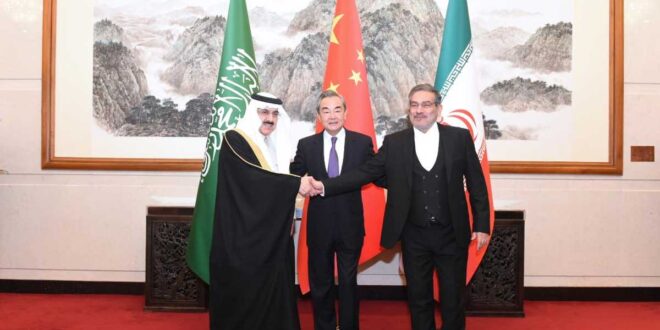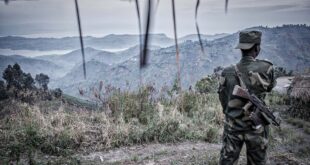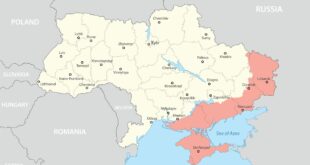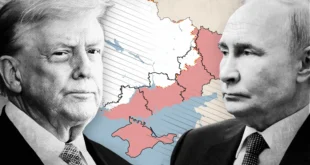Since the period of the Cold War, proxy warfare has been a common phenomenon involving major powers coming into indirect military confrontations in a third state through surrogate forces to reflect dissent or rivalry. The absence of direct engagement makes it a convenient and diplomatically arguable form of maximising power without a blatant blame game.
The Middle Eastern region has had a long history of sequential authoritarianism, political instability and sectarian disputes. While it continues to be crippled by multi-faceted issues of violence in distinctive territories, the Iran- Saudi Arabia rivalry for asserting dominance and religious legitimacy intensifies the complexities of the conflicted region. The United States of America’s early investments in the oil mines of Saudi Arabia made it an economic power in the region giving it an upper hand in asserting dominance. Until the formation of the Republic of Iran, it was the only religious centre of Islam. On the other hand, Iran’s theories of Modern Islam, Anti-Western speculation and political revolution have given them a strong grasp over the non-state actors of other periphery states in turn giving them indirect political control. Iran has always portrayed itself to be the saviour of the Islamic World and alleged the Sunni Arabian regime to be non-Koranic. Although the two states haven’t had a direct military confrontation, they accuse each other of supporting opposing factions and hence the ‘proxy war’ exacerbates regional strategic imbalance.
Proxy War
A critical factor in the context is the discrepancy in the religious beliefs of Shiites and Sunnis. It is on these sentimental foundations that alliances and consequent violence become politically characterized. The claim for legitimacy began in the 7th century itself, however major unrest embarked with the Iranian Revolution of 1979. The creation of Iran as a Shiite state ruptured all hopes of harmony in the Islamic world wherein the authoritarian regimes of Saudi King Khalid Bin ‘Abs Al-Aziz Al Saud and Khomeini stood primarily at strife. During the years 1980-88, the first indications of the proxy war surged in the state of Iraq. The geopolitical significance of Iraq was of crucial importance to the belligerent parties. Kuwait’s invasion by Iran in 1990 and the consequent hostility by the American forces spurred further tendencies of Iraq’s oppressed Shi’a minority to form friendly alliances with Iran by 2003. The chaos of the Arab Spring in 2011 further escalated the scope of interventions to foster support in the region. Expansion of regional power for Iran and Saudi Arabia became easier with the states toppling weaker countries such as Yemen, Jordan, Tunisia and Egypt. Iran’s contribution to the Houthis in Yemen in 2015 acted as a magnet for Saudi Arabia’s intervention in the form of Operation Decisive Storm to the fiasco in Yemen. With Saudi’s close association with the United States of America, a constant state of security dilemma an instance where a state’s efforts to boost its security triggers responses from other states, ultimately resulting in a reduction rather than a boost in the original state’s security emerged in the ongoing sectarian conflict a situation where a state’s efforts to boost its security triggers responses from other states, ultimately resulting in a reduction rather than a boost in the original state’s security emerged in the ongoing sectarian conflict. The involvement in such proxy wars makes disengagement almost impossible as it only worsens the circumstances.
Regional Dynamics
The pre-existing tensions in the countries of MENA (Middle East and North Africa) provided an essential opportunity for the regional powers to use proxy warfare and gain supremacy. Domestic disputes which can be financed in the form of weapons, money and intelligence cost less than a confrontation and add to strategic benefactor for the powerful states. The non-state actors in such cases of imbalances are integral and are often the ‘proxies’ in the ground-level arena. Strong ideological drive i.e., in this case, religious identity deepens the sense of active participation wherein the superpower’s influence comes into play. Iran has supported multiple such non-state actors in Iraq, Lebanon, Palestine, Syria, Yemen and Bahrain to achieve its goals in the region and proliferate anti-USA and Saudi Arabia ideologies. Saudi Arabia has helped the states to mute all these internal dissents and hence expanded alliance building. Henceforth, along with the other GCC countries, Saudi tried to stop all the ‘revolutionary’ movements in the region which posed a threat to the interests of states. The state aimed at the spread of Wahhabism, the conservative form of Islam and even funds billions of dollars to extremist groups. Other International players like the United States of America have interestingly played proxies in these regions like in that of the Syrian Civil War. In association with Saudi Arabis, the United States has reaffirmed its opposition to the Assad Government launching military actions in the territory. USA’s funding to Israel has further complicated the dynamics of the Islamic states who consider Israel a common enemy.
Conflict Resolution
The most numbers of human rights violations and warfare in the past few decades have been witnessed in the Middle Eastern region. Ideological tensions, sectarian rifts and instability have created an invariably polarised population. The Stockholm Agreement of 2018 backed by the UN embodied as an accord between the parties related to the Yemen conflict. Several other UN resolutions like UNSCR 1737 which sanctioned Iran for uranium enrichment activities, UNSCR 2231 which promoted JCPOA and UNSCR 1747 which included sanctions against arms export reflect efforts to control damages of the rivalry. The Joint Comprehensive Plan of Action restricts Iran’s civilian nuclear enrichment program.
However, the other states in the region were not included in this accord making it rather unimpactful in bringing peaceful negotiations. The suspicion of Iran’s nuclear activities has in turn resulted in Saudi’s defensive support to non-state actors cycling back to military tensions. The security officials of Iran and Saudi met in Beijing on March 10, 2023, to restore diplomatic ties brokered by Chinese mediation. The restoration of diplomatic ties held relevance as it would reduce the security dilemma in the region and strengthen the political stability of the states. China has also held meetings and initiated friendly relationships with Iraq making significant geopolitical progressions. Its investment in the oil trade makes it an influential partner to the GCC countries making smooth diplomatic and economic ties with a win-win understanding.
Conclusion
The instability in the Middle Eastern countries continues to be followed by grave instances of exploitation, violence, polarisation and mobilisation. Mutual suspicion and hostility have taken the competition for regional dominance too far away for both countries to reduce involvement. While the religious models of Shias and Sunnis form a major chunk of the disagreement, the role of international players, aspirations of the proxies, economic imbalances, nuclear proliferation and unacceptance of sharing regional power magnifies complications. The dual commitment policy of the USA and economic sanctions against Iran which is accused of being facilitated by Saudi Arabia has backfired severely concerning the sense of transparency of Iran’s nuclear activities aggravating mutual discontentment. Iran’s secrecy in aspects of its deterrence power is characterised as a stabiliser by Iran and an irritation by its neighbours. Being important players in the global business of oil, the geopolitics of the Middle Eastern countries and its implications largely impact the international community. The proxy war between Iran and Saudi Arabia remains the root cause for the exacerbating destabilisation which may remain unresolved in the short term due to the interconnected realms of history, faith and politics.
 Geostrategic Media Political Commentary, Analysis, Security, Defense
Geostrategic Media Political Commentary, Analysis, Security, Defense





